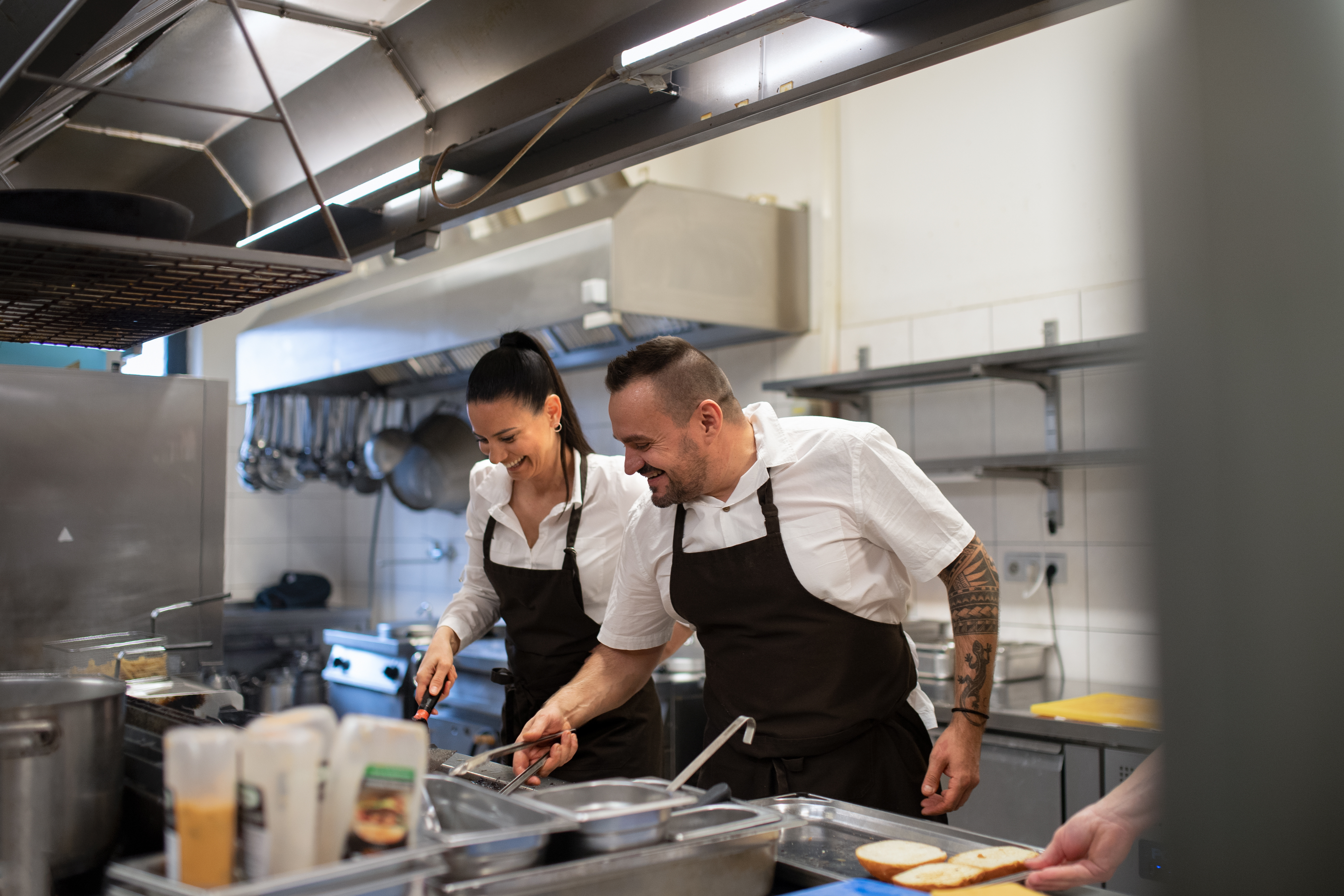
- Home
- Crunchtime Blog
- Workforce Management Requires Labor Optimization

Restaurant labor management is about more than just creating schedules—it's about labor optimization. Here's what operators need to know.
Labor costs make up approximately one-third of a restaurants costs and this number is even higher for some brands. Given tight margins, most operators understand that they need to optimize their labor, but it can be difficult to know where to start. Managing your restaurant's labor and scheduling is an operational challenge with lots of moving parts, and even some daunting legal requirements.
Labor laws are becoming increasingly complex nationwide—from minimum wage, to employing minors, to Fair Workweek, and more. When you consider the added challenge of staff shortages and rising labor costs, it can feel nearly impossible for restaurants to focus on labor optimization.
"There has to be a restaurant scheduling solution out there that can make it easier to optimize labor!"
— Restaurant Operators, Everywhere
It makes sense that many operators are today are feeling overwhelmed with labor management and scheduling. That's why it takes a scheduling software with more horsepower than a smartphone app to solve a restaurant's labor optimization problems.
Fast-growing restaurant brands understand they need an integrated scheduling solution that is powerful and sophisticated enough to understand the entire business for truly optimized labor. While lightweight mobile scheduling apps are certainly an important component, they only solve one piece of the puzzle.
If your restaurant brand is ready to tackle the challenges of labor optimization, read on.
Focus on these 7 key areas to optimize labor in your restaurants:
- Accurate Sales Forecast
- Mobile Apps
- Collaboration Tools
- Performance Management Tools
- Real Time Data
- Labor Rules for Compliance
- Integration With Other Systems
An accurate sales forecast is key to labor optimization.
Your forecast should accurately project the ebbs and flow of your sales and traffic each day and help you avoid over-or-under-staffing shifts. If you notice that shifts are consistently over-staffed, you are likely leaving money on the table. On the flip side, a frequently under-staffed restaurant will start to degrade the guest experience, and it won't take long for your customers to notice.
To help you staff the right people, in the right place, at the right time, your sales forecast should be integrated directly into your scheduling software. This will guide your managers as they build staff schedules each week and make sure your team is fully prepped and ready for each guest that walks through the front door.
But it's important to note that not all forecasts are created equal. Your forecast should be able to incorporate a number of business drivers — such as sales, guests, transactions, and menu mix. It should also account for fixed tasks, holidays, LTOs, and other special events that might affect each business day.
From there, you can use smart staffing demand templates in order to translate your business drivers into a dependable staffing model. As you create your staff schedules, you should be able to see employee skill levels, certifications, pay rates, availability, budget information, as well as labor rules. This all might sound straightforward—until the plan goes off the rails.
When the day begins, sales may already be askew, employees may have missed their shifts, an unexpected snowstorm could impact the day, LTO may not be accurately foreseen, or a media purchase might have an adverse, or positive effect. This is where mobility can really make a difference in your labor management.
A mobile scheduling app makes it easier for managers to manage staff schedules and make smarter decisions.
If sales are slower than expected, they can make smart decisions about cutting employees early. This efficiency is even greater when managers can use their smartphone to view schedules, review staff requests, and communicate messages to relevant team members about shift openings or other important updates.
A mobile scheduling app also makes it easy for managers to communicate schedules and coordinate changes with their teams; whether someone wants to release a shift, pick up a shift, or swap shifts. This means the manager does not have to get involved until it's completely necessary. If your managers aren't swamped with admin duties, they can spend more time focusing on other areas like the guest experience or cross-training team members.
Real-time data is the gateway to proactive labor management.
Timely data is also the best way for restaurant managers to address scheduling issues like unintentional overtime. Ideally, your solution will allow you to see the potential for scheduled overtime when you're creating the schedule, and then once on your store floor, real-time data can alert the manager when a team member is about to go into overtime. If your system can only inform you about overtime just before it is about to occur, you are likely facing increased costs.
Remember, a well-informed team can make the best and most cost-effective staffing decisions. If your manager is missing key data points, like labor costs and current sales while they're on the store floor, they are going to be stuck in reactive role.
Prioritize collaboration, because efficient restaurant operations rely on teamwork.
An integrated labor solution should make it easy to get your whole team on the same, page working towards the same goals. Coordinated daily task lists are a great way to make that happen.
All restaurants need a tool that shows tasks with deadlines, giving your managers visibility about what needs to get done each shift. Ideally, this would not happening on sticky notes or a clipboard because manual processes can be highly prone to mistakes. Instead, your daily task list should be integrated into your scheduling platform, and updated in real-time. This way, other people like your district managers or corporate teams can see deadlines and add tasks.
With all your restaurant's team members aligned, daily tasks like inventory counts and food prep can happen faster, and make everyone more productive. Your ability to make the best use of your restaurants staff —in terms of size and quality—during every shift is the key factor in distinguishing Labor Optimization from Labor Scheduling. Don't underestimate the power of your restaurants collaborative tools.
You can even take collaboration one step further by using a restaurant scheduling software that enables collaborative schedule editing. That means two managers can work on the same schedule, at the same time. The more ways you can work together efficiently, the greater productivity.
Use performance management tools to help you gauge how well your stores are optimizing labor.
These tools track employee performance, attendance, and task completion, helping managers to reward the top performing staff. Your managers will also become more effective coaches because they can identify areas for improvement and take action. But this can only happen if you have the right tools and reports that give you visibility into areas around productivity and task completion.
Don't let labor laws and compliant scheduling keep you up at night.
With many regulations changing, compliance can be confusing and time-consuming to navigate. Ideally, your chosen labor management solution will assist you with complying with local, state, federal labor laws, as well as avoiding breaking any major or minor laws or overtime guidelines. Laws like Fair Workweek don't have to be a headache—your chosen solution should allow you to enforce compliant labor practices in every store location.
Integrate your labor solution to help you maximize productivity and profits.
Many restaurant operators today are juggling are a variety different technology platforms for their daily operations. While tech can certainly help propel your business forward in numerous ways, it's also important to understand where you can integrate and consolidate.
Your restaurant's labor scheduling software should be integrated into your daily work flow as much as possible. This includes an integrated forecast, daily task lists, mobile apps, payroll and more. Don't isolate your labor and scheduling, it has an impact on everything!
At Crunchtime, we integrate inventory and labor so you can manage your two highest variable costs—food and labor—in one consolidated platform. When considering new technology partners, think about your operation's biggest costs and how you can manage them more effectively. Labor optimization is often easier said than done, but you can start thinking like a labor-savvy restaurant brand by answering questions like these:
- How can you improve your forecast to help you create fully-covered, balanced shifts?
- Where can you integrate your technologies so data is transmitted faster, and more efficiently?
- How can you make payroll a seamless process?
- What kind of data points should your store team have to help them manage labor proactively?
Prioritize labor optimization
Undoubtedly, it's important that restaurants to use mobile scheduling apps and give employees an easy way to request time off and trade shifts. But operators shouldn't lose sight of the larger goal—labor management is about optimizing labor and ensuring that your restaurant is consistently striking that perfect balance for staffing requirements based on demand each day. The rising cost of labor is no joke. Getting serious about labor optimization can help set your operation up for long-term success in the ever-changing restaurant industry.
Ready to start optimizing labor at your restaurants?
Let's get in touch! Request a demo today so you can see first-hand how Crunchtime will help your restaurant manage labor more efficiently.
Share this post
Related


Employee Communication Using Mobile Labor Apps Enables Agile Response to Pandemic


